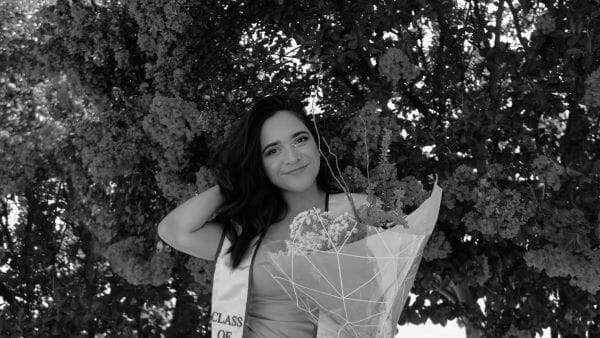Editor's Note: Read more reviews of OVID.tv films here
Oh so fittingly, the first clip of Into Her Own shows Ursula von Rydingsvard on her own in a large space piled with mountains of material. We quickly discern this is her studio.It’s here, Ursula carves, draws, and creates something not beautiful and idealized, but abstract, evocative, and monumental-- out of wood.
Ursula von Rysinggard: Into Her Own, by NYC-based photographer and filmmaker, Daniel Traub, follows Ursula as she inspires and constructs sculptures that are often staggering in scale, but always representative of human emotion and state. For the most part, Ursula narrates. We also get different points of view and opinions from her brother and other renowned artists and art aficionados.
URSULA VON RYDINGSVARD: INTO HER OWN offers peek into von Rydingsvard’s world
Just a few short minutes into the film, we’re transported to mid 1900’s Germany. We learn that this period in von Rydingsvard’s life has a lasting effect on everything she creates afterwards. World War II devastates all--leaving grim skies and struggling families. Cities are destroyed. The devastation lingers well after the war when Rydinsvard, her family, and countless others are forced into Displaced Persons camps. Von Rydingsvard recounts that the walls she and her family took shelter in were made of wood, and how she drew comfort and solace from those wooden walls that protected her and her family from what walked just beyond.
As the story continues, we meet many in the art world, such as artist Elka Krajewska, Adam Weinburg (curator and director at the Whitney Museum of American Art) among others. They share the view that Ursula von Rydingsvard’s work is timeless and enduring because it draws from her past, present, and future. We see clips of Ursula’s work all around the world--from staggering sculptures made of wood, to smaller sculptures made from the flesh of animals. Regardless of the medium she chooses, or a work’s monumental size, Ursula explains to us that her sculptures are born from childhood experiences, from a strained relationship with her father, from anger, from frustration, and from adolescent experiences. She hopes that these emotions translate into her work so that they may have a lasting effect on those who view them, today and tomorrow.
URSULA VON RYDINGSVARD:INTO HER OWN will likely appeal both to those interested in art, like this reviewer, who are very familiar with the artist’s work as well as those who are not. This documentary is an especially top pick for art aficionados who love to learn about what makes an artist go and keep going, for film buffs who live to witness the telling of a story through a lens, and for culture-lovers who are drawn to the many ways culture shapes and shifts a person. The film excels, in the reviewer’s opinion, in showing how art can affect one’s character, connection, and emotion. Those uninterested in art or history may not find this film as appealing.
RECOMMENDED
Nominate this for The Picture This Post BEST OF 2020???
Click Readers' Choice
Vote Securely! Vote Privately! And Make Your Vote Count-- as all voting should be!!
Run Time: 57 minutes
Directed by Daniel Traub
Produced by Daniel Traub, Ken Kobland, and Simon Taufique
Music by Simon Taufique
Edited by Ken Kobland and Melody London
For more information, visit Ursula von Rydingsvard's ‘s website.
To watch this film, visit the Ovid.tv page for URSULA VON RYDINGSVARD: INTO HER OWN.
Images courtesy of URSULA VON RYDINGSVARD: INTO HER OWN.

About the Author: Alex Santoyo
Alex P. Santoyo is a California native and recent college graduate living in Los Angeles. She is creative at heart, and spends her time writing, brainstorming paintings, sketching portraits, and dabbling in graphic design. Her favorite (guilty pleasure) genre is contemporary romance and just about any book about design. She enjoys wandering costume exhibitions and galleries, chasing her dog on long walks, and a good cup of coffee.








